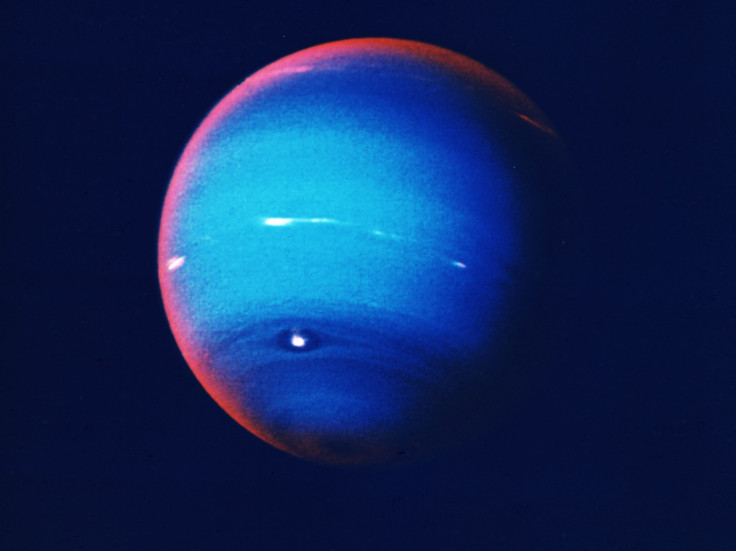Neptune Mystery Solved: Here's Where Tiny Moon 'That Shouldn't Be There' Came From

NASA's Hubble Space Telescope caught a glimpse of a tiny, mysterious moon orbiting Neptune back in 2013, but scientists were unable to come up with an explanation as to why it is there. Interestingly, a new study may have finally cracked the mystery behind the "moon that shouldn't be there."
Neptune's newest moon, Hippocamp, baffled scientists after they noticed that it orbited very closely next to Neptune's biggest inner moon, Proteus. In cases such as these, the larger moon's gravitational force would have swept Hippocamp aside or swallowed it during its orbit. Hippocamp, after all, is only 20 miles (34 kilometers) in diameter and 1/1000th the mass of Proteus. The larger Neptune moon measures 260 miles or 418 kilometers across.
This is an artist's concept of Neptune's tiny moon Hippocamp. Only 20 miles across, it may actually be a broken-off fragment from a much larger neighboring moon, Proteus! Read the full story: https://t.co/OvX2MvjYzD pic.twitter.com/eQMN7gACD5
— Hubble (@NASAHubble) February 20, 2019
In a study published on Feb. 21 in the journal Nature, researchers offered an explanation regarding the tiny new Neptune moon’s origins. They theorized that it may have come from Proteus, perhaps as a result of its collision with a comet billions of years ago.
One of the study's co-authors, Mark Showalter of the SETI Institute in Mountain View, California, said in a statement on NASA's website that Proteus may have once been where the tiny new moon is now, but migrated slowly outward over time. Today, Hippocamp's and Proteus' orbits are 7,500 miles (about 12,070 kilometers) apart.
Showalter and his colleagues backed up their explanation with images taken by Voyager 2 back in 1989. The images revealed a large impact crater on Proteus that is almost big enough to have broken the moon apart.
"With Hubble, now we know that a little piece of Proteus got left behind and we see it today as Hippocamp," he said.
Proteus wouldn't be the first moon in the solar system to have been hit by a comet and birthed a new moon, according to the researchers.
"Based on estimates of comet populations, we know that other moons in the outer solar system have been hit by comets, smashed apart, and re-accreted multiple times," study co-author Jack Lissauer of NASA's Ames Research Center in California's Silicon Valley said. "This pair of satellites provides a dramatic illustration that moons are sometimes broken apart by comets."
© Copyright IBTimes 2024. All rights reserved.





















